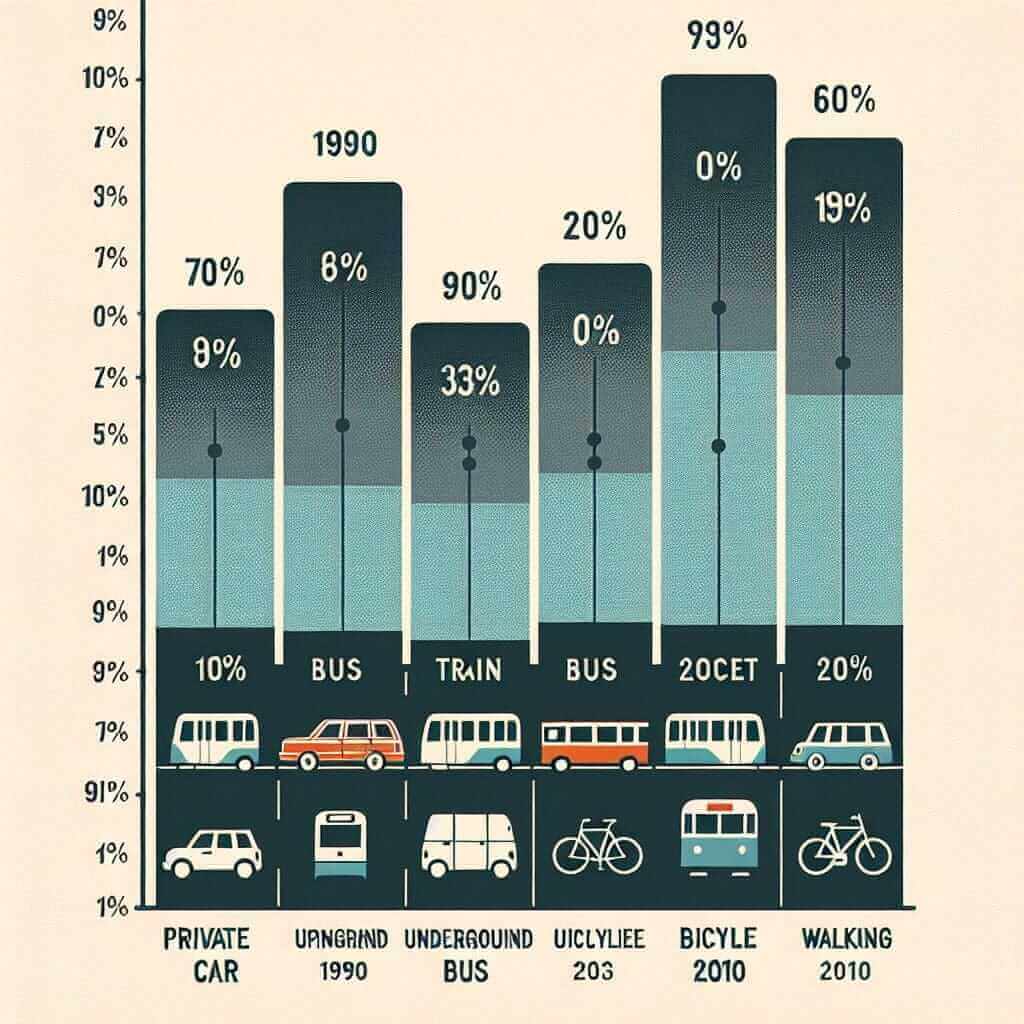As an IELTS instructor with over two decades of experience, I’ve seen firsthand how the IELTS Speaking test can be daunting, especially when faced with describing a graph. Fear not! This comprehensive guide will equip you with the skills to confidently summarize graphs like a pro.
The Importance of Graph Summarization in IELTS
The ability to interpret and describe visual data is a key skill assessed in the IELTS Speaking test, particularly in Part 2. You might encounter various graphs, charts, or diagrams, and your task is to provide a clear and concise summary within a minute.
Effective Strategies for Summarizing Graphs
1. Analyze the Graph Carefully
- Identify the graph type: Is it a line graph, bar chart, pie chart, or table? Understanding the type helps you choose the right vocabulary and structure your response.
- Examine the axes and labels: Pay close attention to the units of measurement, the time frame (if applicable), and what each axis represents.
- Identify the main trends: Look for overall patterns, increases, decreases, fluctuations, or significant points.
2. Use Precise and Varied Language
- Vocabulary for trends: Use verbs like “increase,” “decrease,” “fluctuate,” “remain stable,” “peak,” “plummet,” along with adverbs for describing the rate of change (“sharply,” “gradually,” “steadily”).
- Vocabulary for comparisons: Utilize comparative adjectives and adverbs to highlight differences (“higher than,” “lower than,” “the most significant increase,” etc.)
- Paraphrasing: Avoid simply repeating the exact words used in the graph. Rephrase information using synonyms and different grammatical structures.
3. Structure Your Response Logically
- Overview: Begin with a concise overview sentence that states the main trend or purpose of the graph. For example: “The line graph illustrates the changes in coffee consumption in Italy between 1980 and 2010.”
- Key features: Focus on the most significant trends, supporting your statements with data from the graph. For example: “Coffee consumption rose steadily throughout the 1980s, reaching a peak of 2.5 cups per person per day in 1990.”
- Don’t over-describe: You don’t need to mention every single detail. Select the most important information to present a clear and concise summary.
Example from an IELTS Speaking Test
Let’s imagine you’re presented with a bar chart showing the percentage of people using different modes of transport in London in 1990 and 2010.

Sample Response:
“This bar chart compares the percentage of Londoners using various modes of transportation in 1990 and 2010. Overall, the use of private cars remained the most popular option in both years. However, there was a marked increase in the use of public transport, particularly the underground system, while cycling also saw significant growth.”
Tips for Success
- Practice Regularly: Practice summarizing different types of graphs using sample IELTS materials.
- Record Yourself: Listen back to identify areas for improvement in fluency, vocabulary, and pronunciation.
- Focus on Clarity: Aim for a clear and concise delivery, avoiding overly complex sentences or jargon.
- Don’t Panic: If you miss a detail or stumble over words, don’t panic. Keep going and focus on presenting the key information clearly.
Remember, confidence comes with practice. By following these strategies and honing your skills, you’ll be well-equipped to impress the examiner with your ability to summarize graphs effectively on the IELTS Speaking test.